 |
 |
 |
| |
PEP-in-pocket (PIP): Long-term follow-up of on demand HIV post-exposure prophylaxis: Is PEP-in-Pocket Best Option for Low-Frequency High-Risk HIV Exposure?
|
| |
| |
IDWeek 2023, October 11-15, 2023, Boston
Mark Mascolini
PEP-in-pocket (PIP), a 28-day supply of antiretrovirals for self-administered postexposure prophylaxis (PEP) against HIV by people with only occasional high-risk exposures, blocked HIV and cost less than daily oral PrEP in a retrospective analysis of 112 people attending two big Toronto HIV prevention clinics [1].
PrEP and PEP work well in preventing HIV infection, said researchers from Toronto General Hospital, but neither strategy may be the best choice for everyone at high risk for HIV infection. "PrEP is terrific," the Toronto team said, but mainly for people with at least "semifrequent" HIV exposures. Standard oral PrEP requires daily dosing, on-demand oral PrEP remains untested in people with, say, 1 to 3 yearly brushes with HIV, and not everyone is comfortable with long-acting injected PrEP. PEP also effectively staves off HIV, but people who need it can face "tremendous barriers" to getting a fast PEP prescription, and it comes with questions about cost, follow-up, and stigma.
Enter PIP, the strategy being studied in Toronto. PIP candidates get a proactive 28-day prescription of guideline-endorsed PEP plus instructions on using it after an HIV exposure. PIP users visit their clinic on a nonurgent basis after they start PIP.
What does a PIP user look like? The typical candidate has from 0 to 4 high-risk HIV exposures yearly and may include people who always want to wear a condom but sometimes can't or whose condom breaks. The PIP user may be a PrEP user who decides to stop that tactic but wants a back-up plan, or someone who infrequently shares injection drug equipment, or someone who has a hard time getting PEP in emergencies-like people living in rural areas or lacking fast transportation to a PEP provider.
The PIP investigators noted that more than half of people using daily PrEP pick up no sexually transmitted infections (STIs) over the course of a year. They asked how many of these people really need daily PrEP?
The retrospectively studied PIP cohort consisted of people referred to two Toronto HIV prevention clinics by emergency departments, primary care providers, or sexual health clinics to consider PrEP or PEP. Some of these people opted for PIP when health workers discussed its differences from PrEP or PEP. They used PIP sometime from February 2016 through December 2022.
The study group included 112 people with a median age of 37 (range 18 to 69), 108 of them (96%) assigned male at birth. PIP duration averaged 1.6 years for a total of 184 person-years. Of these 112 people prescribed PIP, 35 (31%) started PIP after a sexual exposure. Sixteen used PIP once and 19 used it more than once. All told, the group started 69 courses of PIP and no one got infected with HIV. (These researchers published an account of this retrospective group at an earlier follow-up point a few years ago [2].)
For almost all PIP uses, 98.6%, cohort members completed HIV and STI testing within 6 months of self-starting PIP. Five people stopped using PIP, 4 because of a changed risk assessment by their provider and 1 because of side effects. Data from 90 PIP users showed that 13 people (14%) had 22 STIs. Thirty-four people (31%) decided to start using PrEP during the observation period, while 33 PrEP users (30%) changed to PIP.
Comparing the cost of PIP with daily or on-demand PrEP, the researchers created a PIP group of HIV-uninfected men and women recruited from hospitals and specialty health clinics. They matched each PIP user to one PrEP user by age, city, and a modified measure of HIV risk. The PrEP group came from the Ontario PrEP Cohort Study (ON-PrEP). The investigators considered drug costs (antiretrovirals and STI treatments), clinic costs (visit costs, blood work, other testing), and other HIV/STI and health system costs (like counseling services). The matched pairs of PIP and PrEP users averaged 38 years in age and averaged a risk score of 10 (out of 26).
Compared with PrEP, PIP saved $1544 in drug costs, $137 in clinic costs, and $54 in other health system costs for a total $1735 in savings. The researchers figured PIP costs 43% less per year than PrEP.
The Toronto team suggested several benefits to PIP versus PEP or PrEP: protection for people with few (but still high-risk) HIV exposures; immediate access to HIV prevention without costly delays in the emergency room or urgent care; lower cost compared with daily PrEP; giving users autonomy and agency over their own care.
References
1. Billick MJ, Fisher K, Myers S, Tan D, Bogoch I. PEP-in-pocket (PIP): Long-term follow-up of on demand HIV post-exposure prophylaxis. IDWeek 2023, October 11-15, 2023, Boston.
2. Alghamdi A, Hempel A, Heendeniya A, Clifford-Rashotte M, Tan DHS, Bogoch II. HIV postexposure prophylaxis-in-pocket: long-term follow-up of individuals with low-frequency, high-risk HIV exposures. AIDS. 2020;34:433-437. doi: 10.1097/QAD.0000000000002441. https://journals.lww.com/aidsonline/fulltext/2020/03010/hiv_postexposure_prophylaxis_in_pocket__long_term.10.aspx

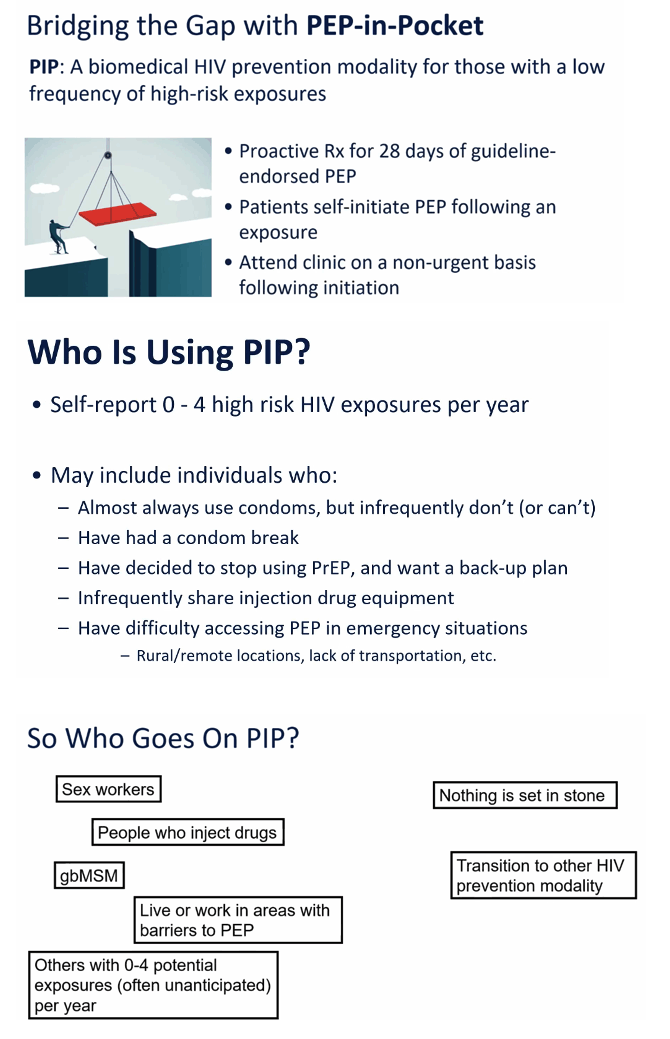
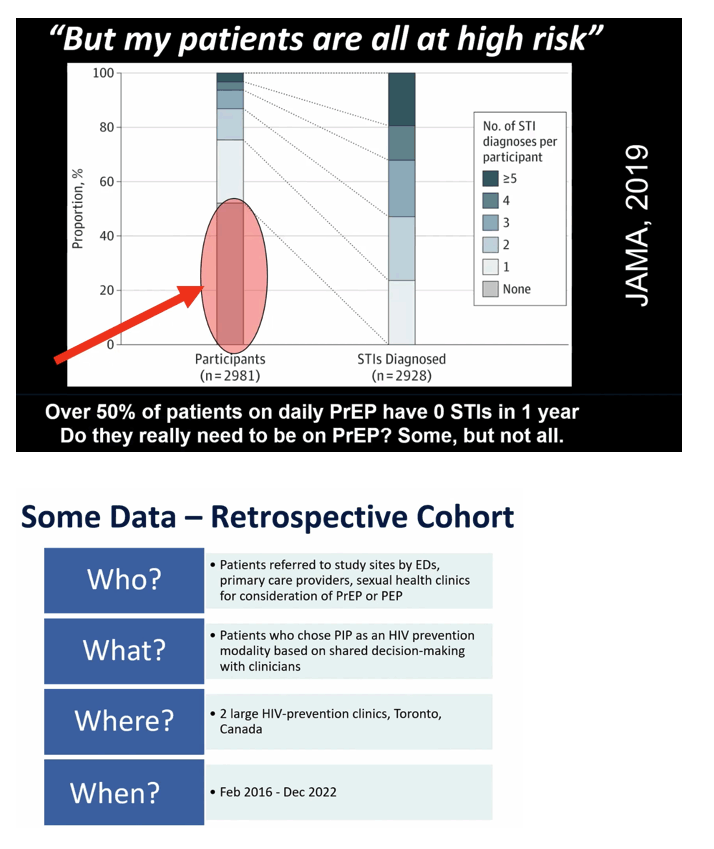
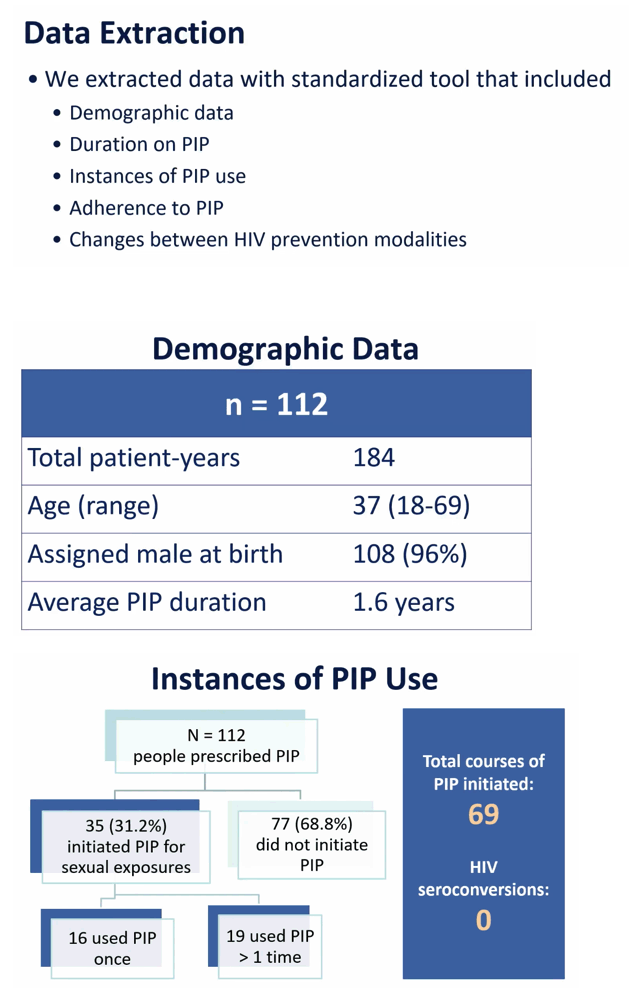
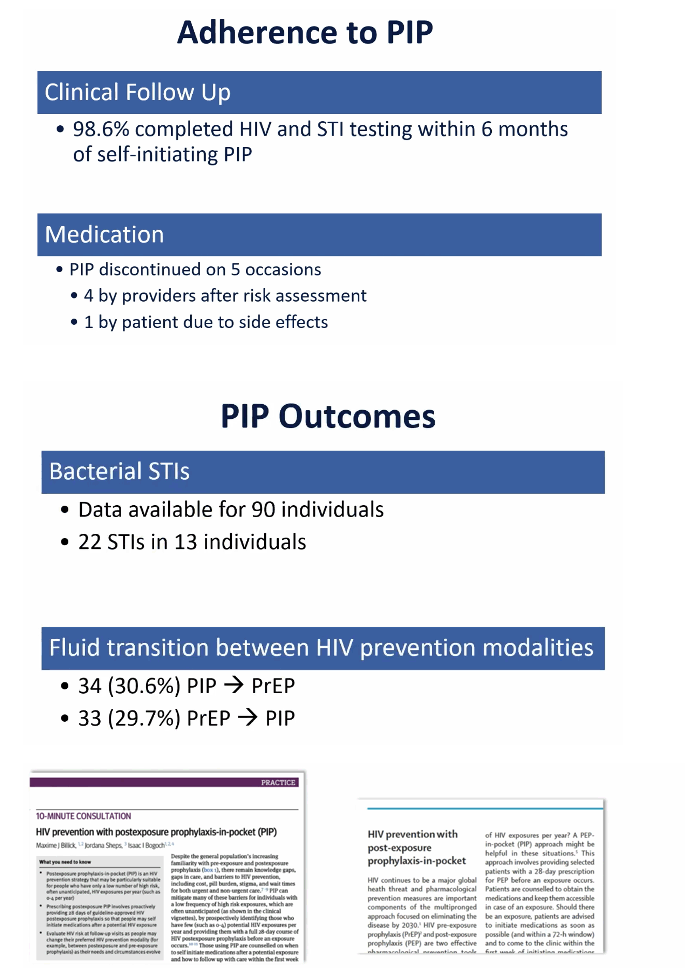
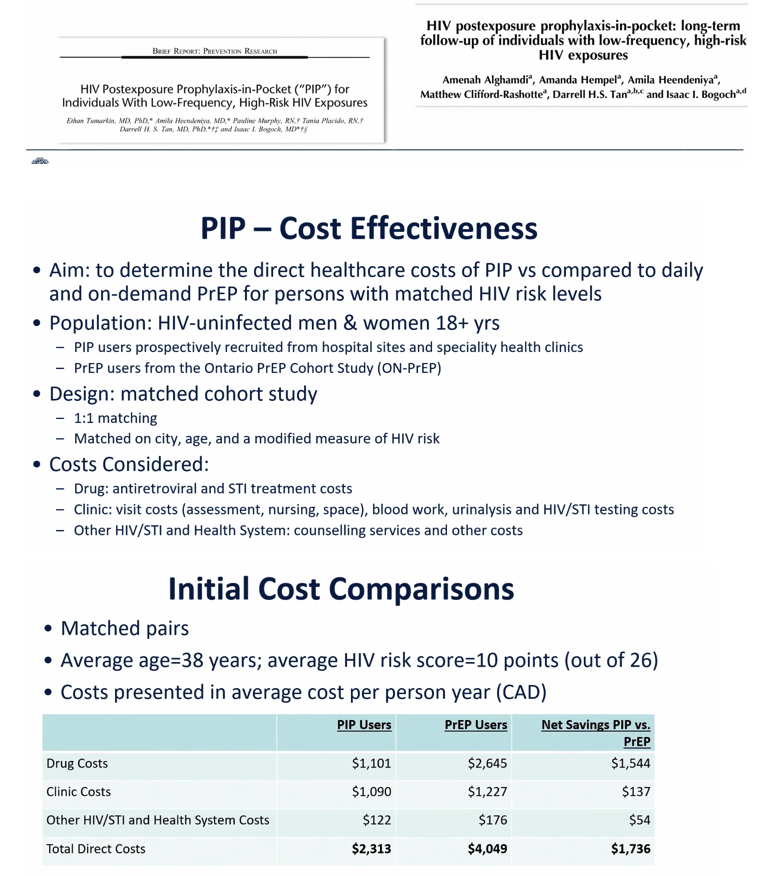
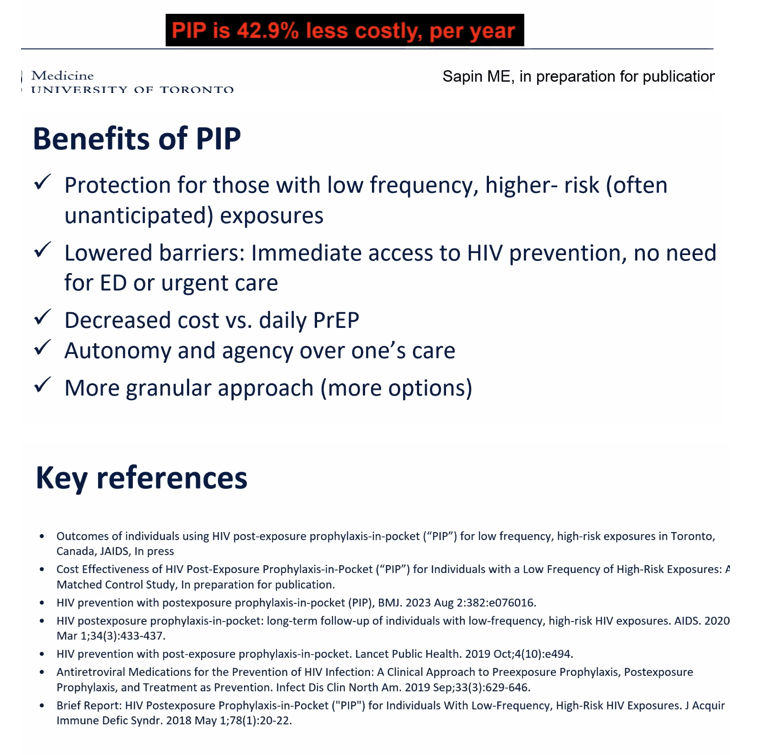
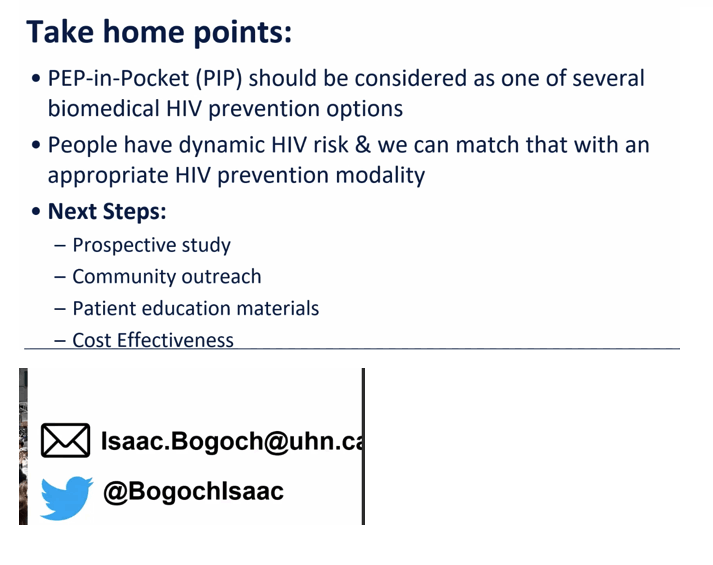
|
| |
|
 |
 |
|
|